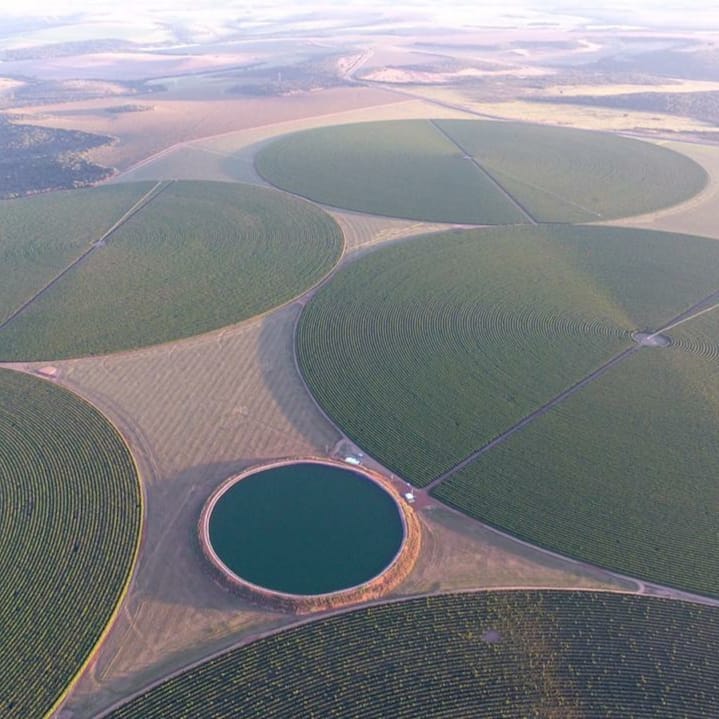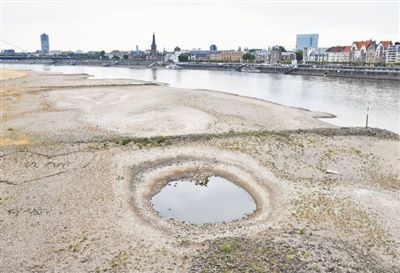Water is precious, especially in a time of dramatic climate change
Since the beginning of summer this year, Europe has experienced persistent high temperature weather, most of which are drier than before, and the precipitation in some countries has dropped to record levels. Climate experts point to global warming as the cause of increased drought in much of Europe, especially the Mediterranean. The general trend going forward is for more and more frequent droughts in Europe.

The World Meteorological Organization recently released a report saying that July this year was one of the three hottest Julys on record. The long-lasting and intense heatwave has severely hit many European countries. The latest data from the European Drought Observatory shows that 47% of the EU is in a drought "warning" state, and 17% is in a drought "alert" state.
According to data released by Spain's Ministry of Ecological Transformation and Population Challenges, the current Spanish national reservoir water storage has dropped to 37.9%, a record low since 1995. According to forecasts, the production of grain crops in Spain this winter will be significantly reduced, and the production of cash crops such as wine grapes and olives is expected to decrease by 15%-20%. The water level of the Rhine River in Germany has dropped sharply, and the flow is seriously insufficient, which has seriously affected normal shipping. Water levels in Italy's longest river, the Po, have hit a record low, and boat tours on some stretches of the river have been suspended this summer, while local agricultural production has also been hit hard. The Netherlands has experienced extreme drought, which is rare in history, and the water levels of inland rivers and lakes have dropped to historical lows, seriously affecting agriculture, shipping and natural ecology. Parts of the Loire River in France have almost dried up and some canals have been forced to close.

This summer's heatwave and drought in Europe once again underscored the urgency of tackling climate change. European media believe that European countries should be more predictable in the field of public policies, make plans and plans in advance, optimize the use and management of water resources, and improve the efficiency of agricultural irrigation water in order to better cope with future droughts. The EU's Drought Monitoring Report released in July said that it is very important to actively introduce drought relief measures, but it is also necessary to fundamentally solve the disturbance and damage to the earth's water cycle caused by climate change. The report emphasizes that the EU needs to take further measures in the future to formulate corresponding energy supply and sustainable agricultural development strategies for climate change.
The HDPE geomembrane of the reservoir is used for water storage tanks construction, which has the anti-seepage effect of water storage facilities, and is an important rainwater storage engineering facility. At present, the lack of fresh water resources, water pollution and ecological deterioration restrict social and economic development to a certain extent. As a low-cost water-saving system, the reservoir effectively alleviates the shortage of water resources and solves the problem of urban flood control and drainage.
The main purpose of HDPE geomembrane agricultural irrigation reservoirs is water storage pond. Reservoirs can irrigate crops during drought and less rain, ensuring the harvest season of crops. It can also be filled with water for rainy days when it rains heavily. The most cost-effective material in reservoir construction is the anti-seepage HDPE geomembrane of the reservoir, which can ensure the service life and the safety of the pool.

The reservoir anti-seepage HDPE geomembrane adopts a three-layer co-extrusion blown film process, which has good tensile strength, high impact strength, anti-seepage, acid and alkali resistance, heat resistance, weather resistance, wear resistance and other properties. It is often used to cut off, prevent Infiltration is widely used in construction. According to the size of the construction area, the construction unit glues the anti-seepage geomembrane of the reservoir together with the adhesive method or the hot-melt welding method, which is convenient for construction, cost saving, and anti-seepage. Works well.
Smart Irrigation, a Moroccan company based in Marrakech, the pearl of southern Morocco, has successfully developed challenging projects for sustainable use of scarce water resources in North and West Africa. Examples of projects such as Smart Irrigation include the installation of ponds for plantation irrigation systems to allow olives, lemons and mangoes to thrive. In North Africa in particular, everything revolves around protecting and utilizing scarce water resources as much as possible.
Since 2008, Morocco has been implementing an ambitious agricultural plan called the "Marcoc Vert Plan", which includes irrigating 500.000 hectares / 1.235.527 acres by 2020. Smart Irrigation's core business turned to this irrigation scheme as the company's know-how included the installation of irrigation pots with geomembranes and associated solar drip irrigation systems. These systems are fully in line with the MAROC VERT philosophy, as the plan also envisages the use of as little water as possible and renewable energy sources.
The real market for Smart Irrigation is concentrated in Morocco. The company has successfully implemented projects all over Morocco, both in the northern part of the country with its green valleys and mountains, and in the Moroccan Sahara region, where daytime temperatures reach as high as 55°C / 131°F and nighttime temperatures drop to around 0 degrees.
200 hectares of irrigated olive groves
For an olive tree irrigation project in the El Gharb area, Smart Irrigation sealed a 46,000 sqm / 495,140 sq ft area with HDPE geomembrane (1mm/0.04in) sealed against seepage and installed a complete drip irrigation system. Sandy soil means that no geotextile is required when laying the geomembrane.

At the same time, new irrigated areas have started to plant olive trees, and the first harvest has been fruitful.
In the Dakar region of Senegal, Smart Irrigation installed a 6,800 m²/73,194 sq ft canal and set up a complete irrigation system for mango and lemon plantations within two working days. The team worked eight to ten hours a day to complete the project, especially in the early morning or early evening due to the high temperatures in the desert area. Due to the sand and gravel on the ground, in order to protect the HDPE geomembrane, geotextile was first laid.




